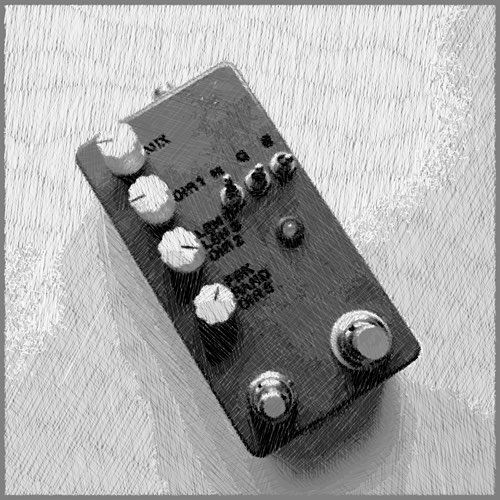Working with Count to Five and BPM.

Note: This article assumes you have a basic understanding of how to use the controls of the Count to Five Delay/Looper pedal from Montreal Assembly.
While Count To Five’s output can seem wonderfully insane, most of what it does is predictable. Even though there’s no MIDI or readout, much of the seeming mayhem is also controllable. I do a lot of recording from CT5 directly into a TC Electronic Wiretap and then assemble these tracks for mixing, so I rely heavily on a BPM structure to get results that follow a timeframe. With a little math (mostly doubling or halving) and a metronome, you’ll be able to control many of your CT5 results. Here’s how to work within the three modes.
M1
M1 is the only mode with a fixed-length buffer and is the easiest to work with. The LEN B knob (DIR2) controls buffer length. The chart below starts with the knob at 7a.
| LEN B Pos | Length | BPM |
|---|---|---|
| 1 | 15.625ms | 3840 |
| 2 | 31.25ms | 1920 |
| 3 | 62.5ms | 960 |
| 4 | 125ms | 480 |
| 5 | 250ms | 240 |
| 6 | 500ms | 120 |
| 7 | 1s | 60 |
| 8 | 2s | 30 |
| 9 | 4s | 15 |
All buffer lengths won’t be practical and 30-240 are the most musically useful. But here’s where the math comes in: when you start turning the DIR1 knob, the speed of buffer playback changes, so you’ll need to factor this into the numbers in the chart above. With the LEN B knob set at 120 BPM and quantization set with the Q switch down to position 2 (Chromatic), the 12n position of DIR1 will pitch your effect down an octave and slows it to half speed (60 BPM). Likewise, if you set DIR1 to 7a or 5p, you’ll get an effect an octave higher at twice speed (240 BPM).
Octaves are easiest to work with. (But if you want to get the BPM for individual notes, multiply each chromatic note up by 1.143 or multiply each note down by .857. Is that math right? Only my statistics prof knows for sure.)
M2
M2 is the trickiest mode. Here the buffer length isn’t fixed, but controlled by how long you hold the left footswitch when recording. Also, the LEN S knob doesn’t use fixed positions for the slices. So while you can’t set precise slice timing, you can control the length of the buffer by using a metronome to define lengths. For example: recording for 4 beats at 120 BPM gives you a 2 second recording.
M3
M3 is also tricky since you set the length of the buffer manually. (That, and the fact that you can have 3 play heads moving at three different speeds.) Again, by using a metronome when recording to the buffer you can be precise with the buffer length. Here’s how I made the sample below:
| Control | Setting |
|---|---|
| Q Switch | Position 2 (Chromatic) |
| DIR1 | 12n (-Octave) |
| DIR2 | 2p (Orig Pitch) |
| DIR3 | 5p (+Octave) |
I then held down the left footswitch to record for about a second. The result is DIR1 playing once, DIR2 playing twice and DIR3 playing 4 times for the length of the buffer and repeating, creating a nice rhythm. The easiest way to set head alignment is to do a scrub recording first to set your controls for pitch and then do the final recording so the heads are already synced before you start. (Obviously this is not an easy live technique.)
You don’t have to work with octaves. Fifths can provide some nice rhythms when Q is set to position 6. Or setting the heads two notes part with Q in position 2 can give you more complex rhythms.
Note that it’s best to be precise when you start recording the buffer. Any hesitation (even tiny) after starting to record will be doubled or halved, throwing off the pacing. I recommend striking your chord before you start recording and things will line up correctly as they did in the sample below.
This was created by playing one F minor chord through the Count to Five. It was recorded into a TC Electronic Wiretap with a Godin Multiuke, Fairfield Accountant compressor, CT5 and Caroline Meteore reverb.
You can adjust the heads on the fly (if needed) to sync up or stagger. In the scenario above, you’d turn DIR2 up a note for a split second and then back. Each time you do this it will advance the play head a bit. Keep doing it until the play head controlled by DIR2 is aligned and then do the same to DIR3. This can be useful when working with reversed sound to get the alignment sounding more natural.
Check out more of my pedal posts.
